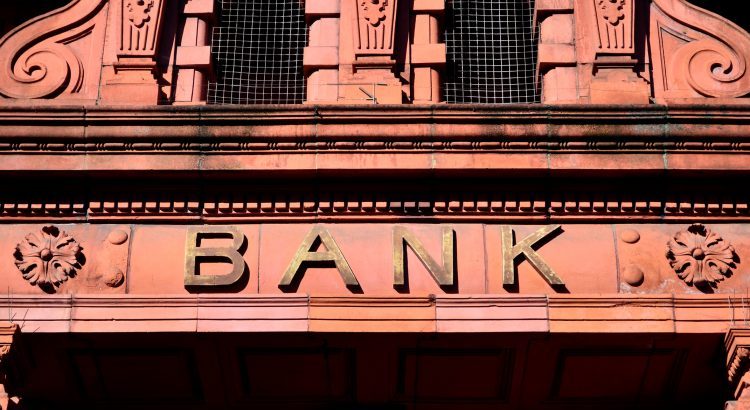FROM OUR PARTNERS

When it comes to personal banking, there are a lot of choices available. Throughout your life, you’ll use your bank for multiple things – opening checking and savings accounts, managing your long-term investments, paying bills, and more. Because banking will play a major role in your life, it’s best to consider all the options available and decide what works best for you.
Traditional banking is in-person banking at an established financial institution, such as Bank of America or Wells Fargo. These banks have a physical presence: they are made up of local branches in areas they operate, along with regional and national headquarter locations.
Most people use these banks to manage their personal accounts, including checking, savings, retirement, and more. Beyond personal accounts, many people also use them for their business operations due to the variety of capabilities these banks offer.
There are plenty of options, and the choices available depend widely on your location. Larger banks have multiple branches throughout the country, while smaller institutions may only have a few branches in specific areas. These banks vary significantly when it comes to banking hours, interest rates, and overall capabilities.
With traditional banking, you can carry out typical banking activities: making deposits, opening accounts, and many other services. Most institutions have ATM, in-person, and mobile banking service options for customers, depending on their needs.
These financial institutions have ATMs at their local branches for simple banking activities. Using an ATM, you can make deposits, withdraw money from your accounts, and transfer money between accounts. All you need to access an ATM is your bank card and your PIN number. You will also have the opportunity to view your account balances after you’ve finished your transaction. ATMs allow for quick and easy transactions from virtually anywhere – should you be too far from a local branch of your bank, you can expect to find one at a convenience store.
You are required to visit your local branch for actions beyond deposits and withdrawals. Opening a new account, cashing bonds, taking out a loan, and other banking activities require you to meet with an advisor in person. To access your account at your branch, you will need to present your ID along with your account information to validate your identity. From there, you’ll grant an advisor access to your account to carry out your banking activities.
Traditional banks have been evolving and now offer online and mobile banking options to customers, providing a convenient and easy way to manage your accounts. Beyond the usual capabilities an ATM already offers, mobile banking connects you with customer service operators should you have an issue. Though there is still a need to visit a branch in some scenarios, mobile banking allows for simple actions like depositing checks, reviewing bank statements, and checking your balance from the comfort of your own home.
There are plenty of benefits of traditional banking and what it has to offer customers. Here are the 3 major ones:
Because of the security requirements to access your accounts in person, traditional banking is often thought of as one of the safest ways to bank. Validating your identity adds another layer of security, that may bring you more peace of mind when handling your more sensitive transactions.
The face-to-face interactions with associates to help you with difficult financial activities or issues you encounter. Should you experience any suspicious activity on your accounts, or need assistance with transactions, you have the opportunity to meet with a customer service representative.
Beyond visiting your local branch, customer service is accessible outside of their business hours for emergency situations. This is critical for more serious financial needs.
There are a variety of services offered to customers, including personal loans, mortgages, and international banking activities. Beyond this, you receive quality financial advice, with associates who specialize in different areas of finance and banking to help you. This is particularly helpful for major transactions you may not be very experienced with. If you’re interested in buying a home, for example, you can work with your bank to find the best options for you considering your financial history.
In addition to customer service, most institutions offer rewards and incentives unique to you. Depending on which services you take advantage of at your bank, you may find you are eligible for rewards that help you save more of your money.
Traditional institutions are ideal for individuals who need various banking services, such as overseeing investment portfolios, multiple checking accounts, raising capital and etc. Depending on what you are looking for, there are likely multiple options that can meet all your needs.
Any banking institution guaranteed by the Federal Deposit Insurance Corporation (FDIC) is safe and secure, which provides deposit insurance for your accounts up to $250,000 if the bank were to fail.
Finally, these banks provide a more personalized customer experience. Accessible service and banking associates are helpful for more detailed financial needs, or immediate solutions to any problems that may arise. This added level of service is a necessity for some.
Alternatively, traditional banking may not provide the level of convenience some customers want. Because of the lack of options available through an ATM or online banking, you are required to visit a branch for most of your banking needs. This may pose an inconvenience for many, considering how limited bank hours can be depending on the institution and location.
Traditional banks also come with more fees as opposed to digital banks. Fees related to account balances, opening and closing accounts, and other actions are common. Because of the overhead costs associated with maintaining multiple branches, many fees are charged to customers to cover these costs.
Traditional banking is the most common form of banking, and many individuals across the country use them to manage their financial portfolios. There are tons of options to choose from when deciding on a bank, and you are likely to find one that fits your unique needs.